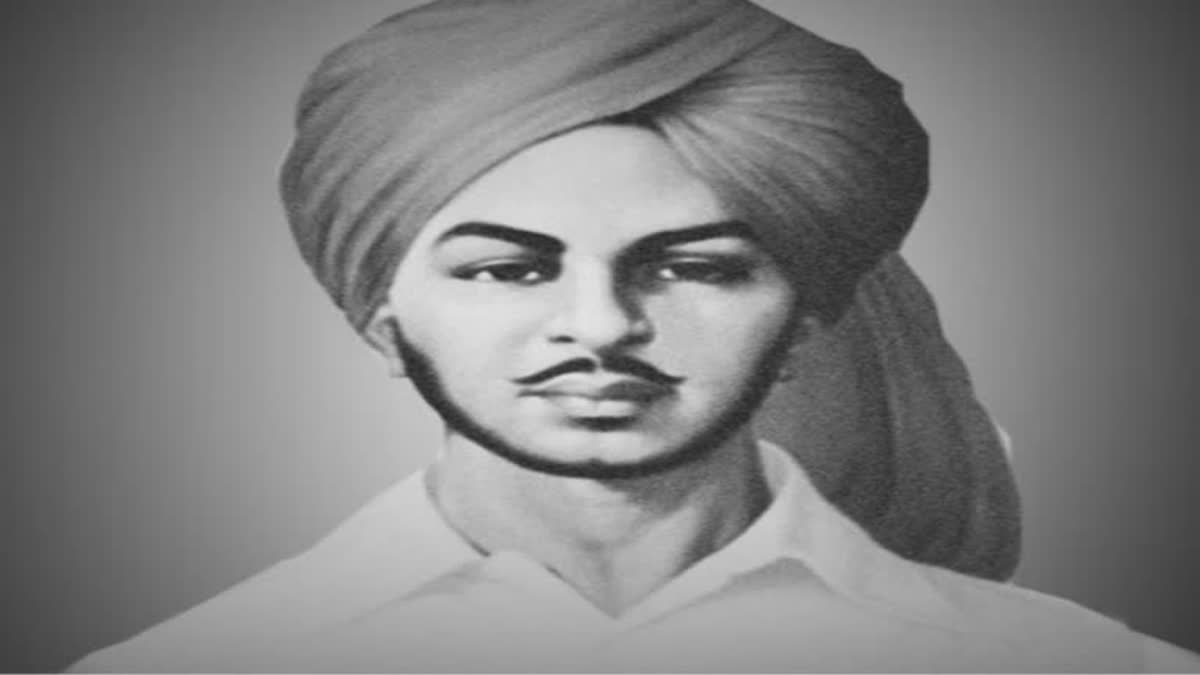New Delhi: In a significant move to honour the legacy of Bhagat Singh, the Pakistan government has inaugurated a gallery dedicated to the legendary Indian freedom fighter at the historic Poonch House in Lahore. This development comes just a month after plans to rename Lahore’s Shadman Chowk in Singh’s honour were scrapped, following legal opposition that labelled him a “terrorist”.
Zahid Akhtar Zaman, Chief Secretary of Pakistan’s Punjab province, inaugurated the Bhagat Singh Gallery at Poonch House on Monday, media in Pakistan reported.
“On the directives of (Punjab province) Chief Minister Maryam Nawaz, the gallery has been established at Poonch House to honour the legacy of freedom fighter Bhagat Singh,” The Nation news website reported. “The gallery showcases Bhagat Singh’s struggle for independence through a collection of historical photographs, letters, and newspaper clippings.”
The development comes a month after a controversy over renaming Shadman Chowk in Lahore in honour of the martyr of the Indian freedom movement. In November, a plan by Lahore’s district government to rename Shadman Chowk after Bhagat Singh was shelved following objections from a retired military officer.
In response to a contempt petition filed by Bhagat Singh Memorial Foundation Pakistan chairman Imtiaz Rasheed Qureshi, the Metropolitan Corporation of Lahore stated that Commodore (retd.) Tariq Majeed, a member of the renaming committee, objected to the proposal.
“In today’s terms, he was a terrorist,” Majeed stated in a report on the renaming of the square. “He killed a British police officer, and for this crime, he was hanged along with two accomplices.”
The Poonch House, where the Bhagat Singh Gallery has been opened, is associated with the princely state of Poonch, which was part of the larger Jammu and Kashmir region during British rule. It was constructed by a ruler of Poonch Jagir, Raja Moti Singh, in 1897 as a rest house.
The building served as the residence of the Maharaja of Poonch when he visited Lahore. It was constructed to provide a majestic and functional space for the royalty, dignitaries, and officials associated with the state.
So, what is the significance of the Bhagat Singh Gallery being opened at the Poonch House?
In December 1928, Bhagat Singh and an associate, Shivaram Rajguru, both members of a small revolutionary group, the Hindustan Socialist Republican Association (HSRA), shot dead a 21-year-old British police officer, John Saunders in Lahore mistaking Saunders, who was still on probation, for the British senior police superintendent, James Scott, whom they had intended to assassinate. They held Scott responsible for the death of popular Indian nationalist leader Lala Lajpat Rai for having ordered a baton charge in which Rai was injured and two weeks thereafter died of a heart attack.
As Saunders exited a police station on a motorcycle, he was felled by a single bullet fired from across the street by Rajguru, a marksman. As he lay injured, he was shot at close range several times by Singh. Another associate of Singh, Chandra Shekhar Azad, shot dead an Indian police head constable, Channan Singh, who attempted to give chase as Singh and Rajguru fled.
Singh was thereafter on the run for many months, and no convictions resulted at the time. Surfacing again in April 1929, he and another associate, Batukeshwar Dutt, set off two low-intensity homemade bombs among some unoccupied benches of the Central Legislative Assembly in Delhi. They showered leaflets from the gallery on the legislators below, shouted slogans, and allowed the authorities to arrest them.
The case, renowned as the Lahore Conspiracy Case, against Bhagat Singh and his associates opened on May 5, 1930, at Poonch House. Rajguru challenged the very constitution of the tribunal and said that it was illegal ultra vires. According to him, the then-British Viceroy did not have the power to cut short the normal legal procedure. The Government of India Act of 1915, authorised the Viceroy to promulgate an Ordinance to set up a tribunal but only when the situation demanded.
On October 7, 1930, about three weeks before the expiry of its term, the tribunal delivered its judgement, sentencing Bhagat Singh, Sukhdev and Rajguru to death by hanging. Others were sentenced to transportation for life and rigorous imprisonment.
Singh, Rajguru and Sukhdev were ordered to be hanged on March 24, 1931. The schedule was moved forward by 11 hours and the three were hanged on March 23, 1931, at 7:30 pm in the Lahore jail.
It is in the context of this that the opening of the Bhagat Singh Gallery at Poonch House in Lahore assumes significance. According to The Nation, under the leadership of Secretary of Industries and Commerce, Ehsan Bhatta, the historically significant Poonch House has been restored to its original grandeur. The inauguration of the museum was attended by the secretaries of communications and works, tourism, the director general of archaeology, and other officers.
According to a memorandum of understanding (MoU) signed between the Departments of Industries and Tourism, tourists would be given access to the Poonch House.
And, hence lives the legacy of Bhagat Singh.



